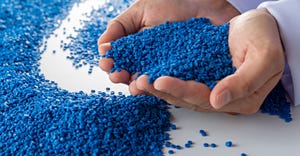Eliminating that expensive dead time
September 27, 1998
Editor's note: Bill Tobin is a molding consultant and lecturer and a frequent contributor to IMM. In this article, he diagnoses and offers a solution for a common shop floor problem.
One of the management philosophies du jour is the work cell, where an operation is entirely completed at one specific site. The end product goes from its raw state to its finished one with a minimum of movement. If you are assembling cars or computers, there is a high degree of logic to this. It is a bit like JIT, which assumes a zero setup time.
But this zero setup time doesn't really apply to molding, so this adaptation requires a different sort of thought process. The same is true of the work cell; it might not apply as well to molding as it does to other processes. It is really a matter of using your head.
All too often, molding companies who offer full service molding to their clients proudly tour the plant showing off the molding department, the assembly department, the QC departments, and so on. I was in a client's plant recently on a project when he proudly pointed to a 150-ton machine and said, "I'm getting $45/hour on that job."
Operator Efficiency
Now, that machine rate for that size machine is quite admirable. However, even though it was a small part, the wall stock was thick, and the cycle time was 45 seconds. A robot placed the parts on a conveyor on the way to the operator. The operator neatly put them into vacuum formed trays that nested into a packing box. What intrigued me was that the packing time took about 15 seconds per cycle. Thus, the operator simply waited during the other 30 seconds. After every 20 trays, she put the full box aside for inspection and constructed a new box. The new box took about 30 seconds to construct.
Not more than two machines away there were two operators working on a job that was ejecting parts from a four-cavity tool every 23 seconds. Each of these parts required four ultrasonic inserts, hence two welders and two operators. What's wrong with this picture?
Here we have three operators doing value added work that could probably be done by two. The operator on the slower machine could walk over to the faster machine, pick up a box of parts, and bring them back to her press to do the inserting during the 19 cycles when she has 30 seconds of dead time. Does she have to keep up with the other operator? Not really.
Paid Labor
The important point here is you are paying an operator to do nothing more than be present at the machine for 15 seconds every 45 seconds and then, once every twenty cycles, be present for the full 45 seconds.
You have already charged your customer for the operator's labor as dead time. You have also charged the other customer for a two operator/one press operation. Thus you have billed out three people's wages. But what if you could free up one of those workers and put that operator on another job? The operator's labor has already been paid for. You would have the luxury of charging the next job for labor that doesn't cost you any money. The labor of the freed-up operator is pure profit.
I don't know of anyone in the molding business who wants people to clock in at the beginning of a shift, work for a little less than two hours, and be paid for a full eight-hour day. However, with dead time, this is exactly what you are doing. Sometimes molders are not able to run a job simply because they lack personnel. The beauty of looking at your production floor as a system and not as individual jobs is the minimization of dead time and the freeing up of people to work on jobs that make money.
If you have jobs that need to be trimmed and packed, but the operator can do these operations faster than the machine, let the parts fall into a box and have the operator come by several times during the shift to do the trim and pack operation. For the rest of the shift, have the operator doing something else that makes money. Keep in mind this could be nothing more than being a relief operator. This would eliminate the silly practice of shutting down for lunch.
Anything that can keep more machines busy with fewer people and less idle time will make you a profit. Just think about it.
You May Also Like


